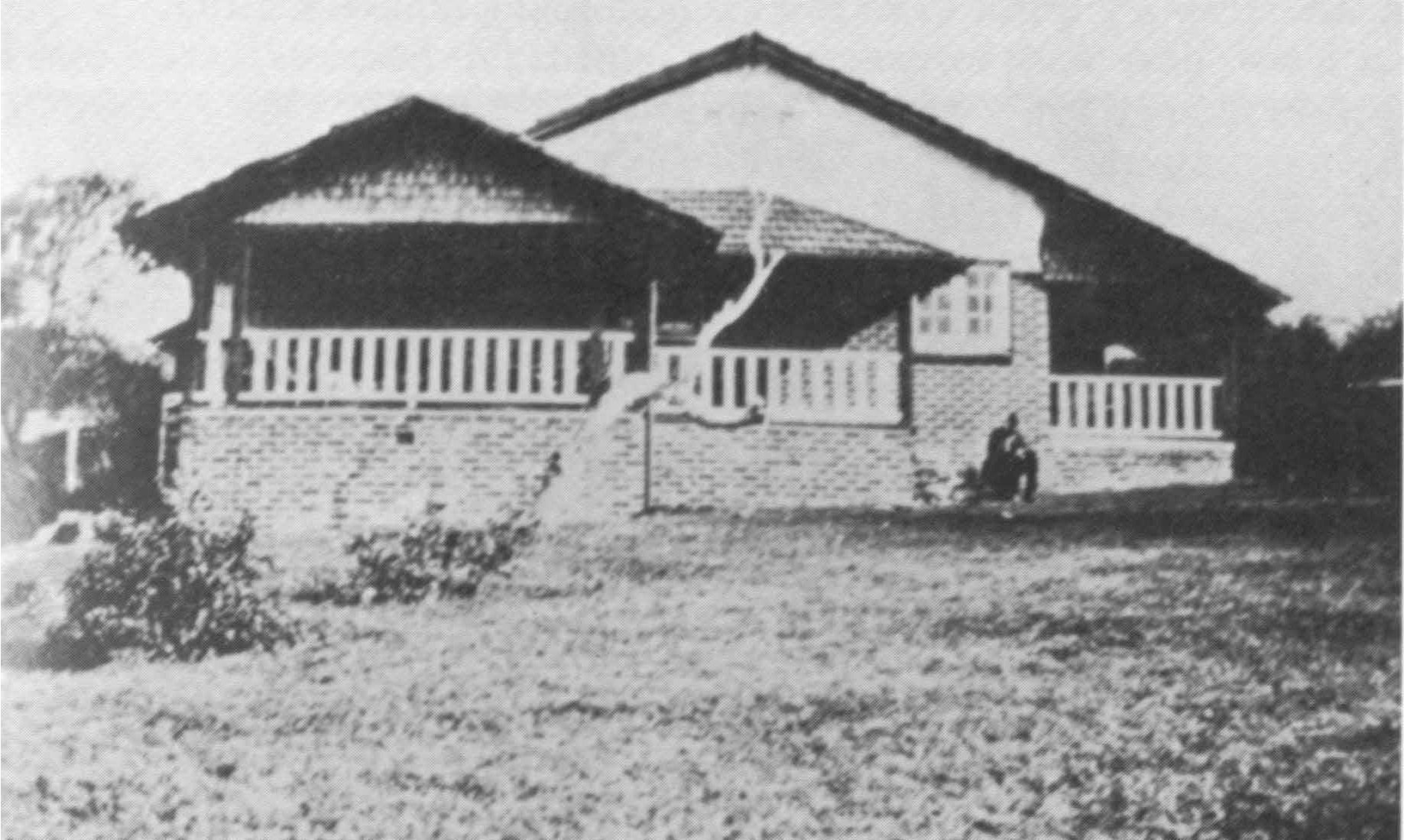PREFACE

Lawrence,
photographed by Dennis Forrester in July 1922 in the front
garden of "Wyewurk" (Lawrence is probably translating
Giovanni Verga)
WHEN
I STARTED what became a project that lasted almost four
decades, it did occur to me at the outset to think what
sort of book it might eventually make.
In August 1974 my wife Sandra wrote to Dr David Farmer,
then the assistant director of the Humanities Research
Centre (HRC) in Austin, Texas (where we had undertaken
the initial research for Sandra's biography of Lady Ottoline
Morrell).
"The book on Ottoline is now virtually completed,"
she told him. "I have two new projects in mind. The
first is a short-term idea which my husband and I will
collaborate on. We would like to do a fairly small book
or monograph on D.H. Lawrence in Australia: his stay there,
its influences on him, and the work he did there…we
plan to finish [it] within 12 months".
Well, it has turned out to be a monograph, of sorts. But
it took longer than 12 months to complete.
When
in 1976 the research started in earnest, I discussed the
form the eventual book might take with a leading Sydney
barrister, Edward St John QC, (whom I was helping with
some problems he was having with some Sydney right-wing
extremists called, wonderfully, The Sinless Perfectionists).
Ted suggested I might emulate AJA Symons, whose biography
The Quest for Corvo is regarded as a masterpiece
of biographical writing. He had a point. The quest for
the truth about Lawrence and Kangaroo is almost
as interesting - certainly a saga in itself - as the truth
itself.
Its content is a distillation of, and elaboration on,
a research diary that I have kept from 1976 to the present
day, and which records what happened during the search
for the truth about Kangaroo, from day-to-day,
week-to-week, decade-to-decade. (That diary - entitled
"Kangaroo's Secret Army Research notes" - can
be accessed on our DH Lawrence Society of Australia website,
http://www.dhlawrencesocietyaustralia.com.au )
I believe the traditional form of the book, in the Gutenberg
sense, is dying. Bookshops are ailing, libraries are on
the verge of becoming obsolete - book mausoleums - and
so the written word, if it is to go forward, must find
new forms and formats more suited to the digital age.
Thus I have tried with this "monograph" to explore
the possibilities that the future is demanding of us writers.
It is my hope that its unorthodox form, and format, will
make it easier and more pleasant to read, in these information-saturated
days.
Robert Darroch
Bondi, 2013
NB
- As this monograph/book is written for both an academic
and a non-academic audience, I have decided not to burden
the text with footnotes or endnotes (for, given the amount
of research it involved, citations would clutter it up
no end). If anyone, from either world, has a query about
a particular source I have relied on, I am happy to provide
it. I can be contacted via our website, http://www.dhlawrencesocietyaustralia.com.au
Illustrations
by courtesy of Paul Delprat, Garry Shead, and the estates
of Sir Sidney Nolan, Brett Whiteley, Howard Ashton, Grace
Cossington-Smith, George Molnar, and the family of Dennis
Forrester. The cover illustration, "Kangaroo",
is a depiction by Sidney Nolan of the Australian author
Patrick White, and is one of his 1982 Kangaroo series
- see below.
Click HERE
to view the online version of this e-book.
next
page 